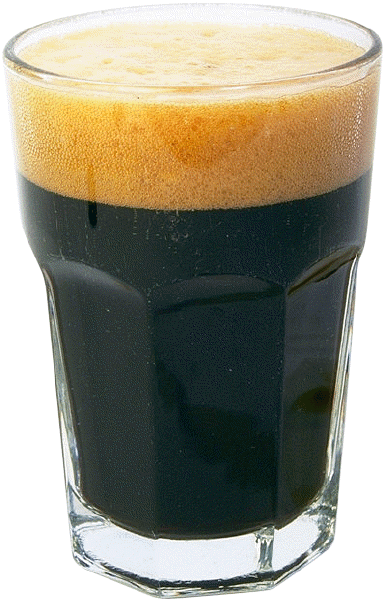- CALCIUM! CALCIUM! CALCIUM!: Calcium is essential for strong bones. Ninety-nine percent of the body's calcium is stored in the bones. There is also calcium circulating in the bloodstream, and as long as there is adequate calcium in the bloodstream from dietary sources, the body is not forced to draw out calcium from the bones into the blood. If, however, the body does experience a calcium deficiency, it will draw calcium out of the bones, weakening them and leaving them vulnerable to osteoporosis.
Besides being required for strong, healthy bones, calcium plays many vital roles in other areas of the body. Maintaining adequate calcium levels in the body affects the heart, the muscular system, the nervous system, the hormonal system, as well as the kidneys, and the gastrointestinal system.  Milk is a good source of calcium as are foods like collard greens, kale, mustard greens, butternut squash, tofu, and sweet potatoes. If you can't get enough calcium from your diet, additional supplementation might be necessary. Milk is a good source of calcium as are foods like collard greens, kale, mustard greens, butternut squash, tofu, and sweet potatoes. If you can't get enough calcium from your diet, additional supplementation might be necessary.
- EAT WHOLE, UNPROCESSED FOODS: Stick to a diet of whole, unprocessed foods which include things like whole grains, legumes, vegetables, fruits, nuts, and seeds.
- GET PLENTY OF YOUR GREENS AND YOUR BEANS: Green leafy vegetables and fruits and vegetables in general are good, healthy sources for a wide range of vitamins and minerals.
- CUT BACK ON THE MEAT: Proteins from meats and other animal products increases calcium loss and weakens the bones. Concentrate on getting more fruits and vegetables in your diet and less meats.
- DRINK PLENTY OF WATER: Drink at least 48 ounces of water daily.
- PASS ON THE SALT: High salt intake increases the urinary excretion of calcium leaving less calcium behind for the body to work with.

Lifestyle Changes
 DON'T DRINK SOFT DRINKS: The phosphorus in soft drinks lowers calcium levels in the body by blocking calcium absorption. Soft drinks also increase phosphate levels in the blood which causes calcium to be pulled out of the bones further depleting their supply. DON'T DRINK SOFT DRINKS: The phosphorus in soft drinks lowers calcium levels in the body by blocking calcium absorption. Soft drinks also increase phosphate levels in the blood which causes calcium to be pulled out of the bones further depleting their supply.
- CUT DOWN ON CAFFEINE: Caffeine increases the urinary excretion of calcium.
- EXERCISE: Regular exercise is a critical factor in maintaining strong bones. Studies have shown that as little as one hour of moderate exercise three times a week can prevent bone loss and increase bone mass in postmenopausal women. One study on the effects of exercise on postmenopausal women with osteoporosis put its participants on a program consisting of one hour of back extension and posture exercises done twice weekly as well as fast walking exercises for one hour three times a week. "At the end of the study, women who added exercise to their medical therapy increased spinal bone density by 4.4%, while women receiving only bone restoring medicines showed an increase in spinal density of just 1.6%." From Disease Prevention and Treatment. "Osteoporosis" pg. 505)
- ELIMINATE ALCOHOL AND SMOKING FROM YOUR LIFE: These activities cause a negative calcium balance in the body where more calcium is being lost than is being taken in.

Medical Options and Precautions
TREATMENT:
- MEDICATION: There are many different drugs used to treat osteoporosis, but they all come with extensive lists of side effects, some of them quite severe.
 ESTROGEN REPLACEMENT THERAPY: Estrogen plays a role in bone health, and postmenopausal women who have suffered a decrease in estrogen production are at high risk of developing osteoporosis. Estrogen replacement therapy replaces this lost estrogen, providing the body with the estrogen that it needs to maintain bone health. Unfortunately, according to Dr. Whiting (Click here for his article on osteoporosis) estrogen replacement increases the risk of some kinds of cancers and of heart disease and gall bladder disease. This type of treatment can also cause enlarged and tender breasts, nausea, skin discoloration, water retention, weight gain, headaches, and digestive problems. Also, estrogen replacement therapy does not replace bone that has been lost; it only prevents further bone loss. Proper nutrition and regular exercise, on the other hand, not only prevents further bone loss, but can replace bone that has been lost. ESTROGEN REPLACEMENT THERAPY: Estrogen plays a role in bone health, and postmenopausal women who have suffered a decrease in estrogen production are at high risk of developing osteoporosis. Estrogen replacement therapy replaces this lost estrogen, providing the body with the estrogen that it needs to maintain bone health. Unfortunately, according to Dr. Whiting (Click here for his article on osteoporosis) estrogen replacement increases the risk of some kinds of cancers and of heart disease and gall bladder disease. This type of treatment can also cause enlarged and tender breasts, nausea, skin discoloration, water retention, weight gain, headaches, and digestive problems. Also, estrogen replacement therapy does not replace bone that has been lost; it only prevents further bone loss. Proper nutrition and regular exercise, on the other hand, not only prevents further bone loss, but can replace bone that has been lost.

|
 Knowledge gives a person many options for managing osteoporosis and
they can then personally take charge of the effect this disease is having on their life.
Knowledge gives a person many options for managing osteoporosis and
they can then personally take charge of the effect this disease is having on their life. Milk is a good source of calcium as are foods like collard greens, kale, mustard greens, butternut squash, tofu, and sweet potatoes. If you can't get enough calcium from your diet, additional supplementation might be necessary.
Milk is a good source of calcium as are foods like collard greens, kale, mustard greens, butternut squash, tofu, and sweet potatoes. If you can't get enough calcium from your diet, additional supplementation might be necessary. DON'T DRINK SOFT DRINKS: The phosphorus in soft drinks lowers calcium levels in the body by blocking calcium absorption. Soft drinks also increase phosphate levels in the blood which causes calcium to be pulled out of the bones further depleting their supply.
DON'T DRINK SOFT DRINKS: The phosphorus in soft drinks lowers calcium levels in the body by blocking calcium absorption. Soft drinks also increase phosphate levels in the blood which causes calcium to be pulled out of the bones further depleting their supply.  ESTROGEN REPLACEMENT THERAPY: Estrogen plays a role in bone health, and postmenopausal women who have suffered a decrease in estrogen production are at high risk of developing osteoporosis. Estrogen replacement therapy replaces this lost estrogen, providing the body with the estrogen that it needs to maintain bone health. Unfortunately, according to Dr. Whiting (
ESTROGEN REPLACEMENT THERAPY: Estrogen plays a role in bone health, and postmenopausal women who have suffered a decrease in estrogen production are at high risk of developing osteoporosis. Estrogen replacement therapy replaces this lost estrogen, providing the body with the estrogen that it needs to maintain bone health. Unfortunately, according to Dr. Whiting (